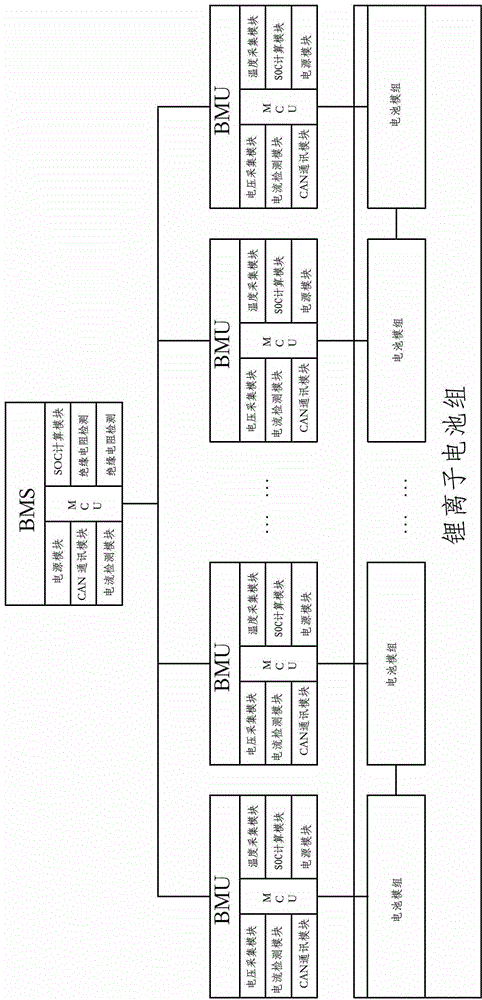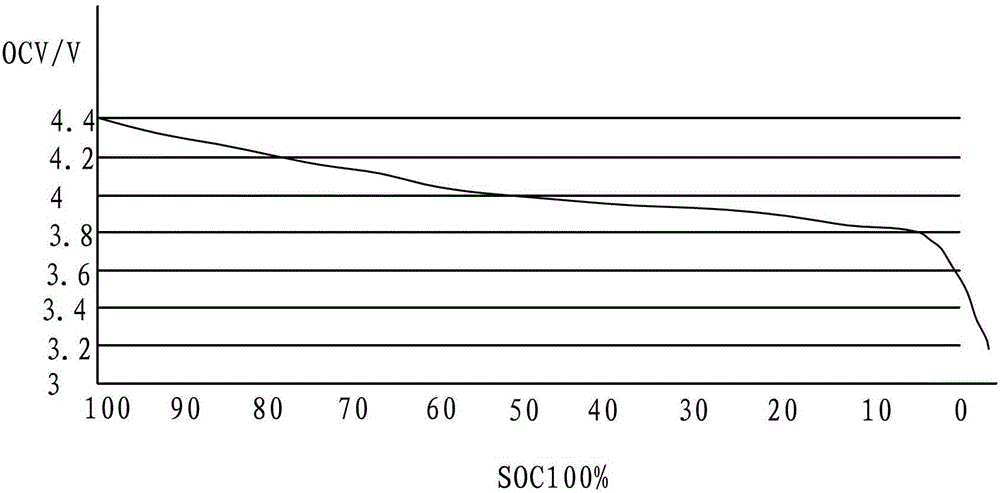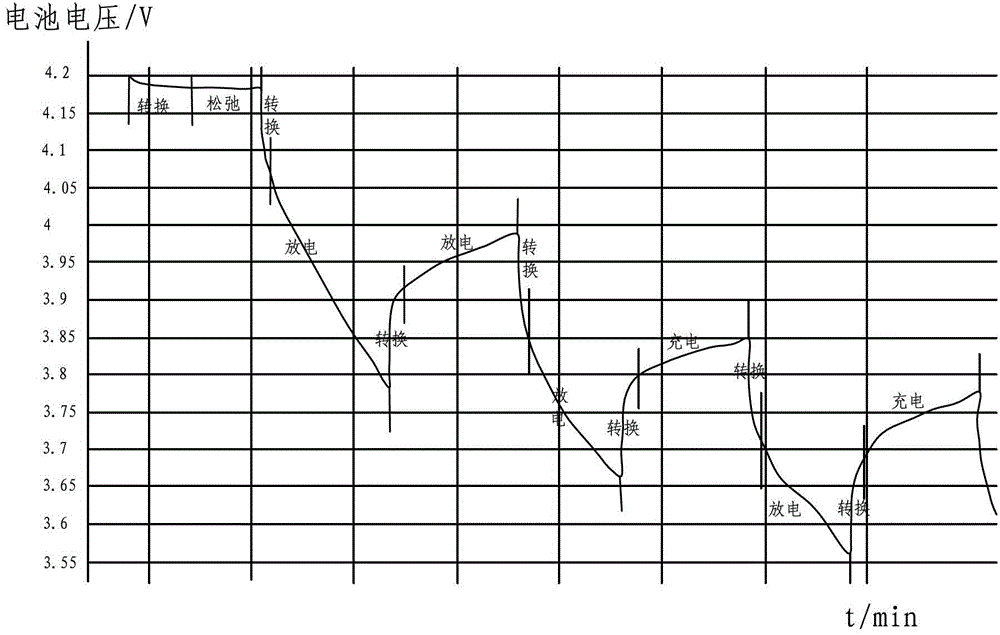Method for computing RAC of lithium ion battery packs
A lithium-ion battery pack, lithium-ion battery technology, applied in the direction of measuring electrical variables, measuring electricity, measuring devices, etc., can solve the problems of inconsistent capacity and internal resistance, low equilibrium efficiency, inaccurate calculation of lithium-ion battery packs, etc.
- Summary
- Abstract
- Description
- Claims
- Application Information
AI Technical Summary
Problems solved by technology
Method used
Image
Examples
Embodiment Construction
[0027] Embodiments of the present invention will be described in detail below in conjunction with the accompanying drawings.
[0028] A method for calculating the residual available capacity RAC of a lithium-ion battery pack of the present invention comprises the following steps:
[0029] A. Calculate the current charging load state SOC value of each single-cell lithium-ion battery in the battery module:
[0030] The voltage acquisition module in each battery module management unit BMU collects the terminal voltage change value ΔU of the single-cell lithium-ion battery corresponding to the interval time Δt, and at the same time inputs the terminal voltage change value ΔU of the single-cell lithium-ion battery into the state machine to determine the current single-cell lithium-ion battery terminal voltage change value ΔU. The state of the ion battery, the battery module includes charge state, discharge state, conversion state and relaxation state.
[0031] image 3 It is a cu...
PUM
 Login to View More
Login to View More Abstract
Description
Claims
Application Information
 Login to View More
Login to View More - R&D
- Intellectual Property
- Life Sciences
- Materials
- Tech Scout
- Unparalleled Data Quality
- Higher Quality Content
- 60% Fewer Hallucinations
Browse by: Latest US Patents, China's latest patents, Technical Efficacy Thesaurus, Application Domain, Technology Topic, Popular Technical Reports.
© 2025 PatSnap. All rights reserved.Legal|Privacy policy|Modern Slavery Act Transparency Statement|Sitemap|About US| Contact US: help@patsnap.com



